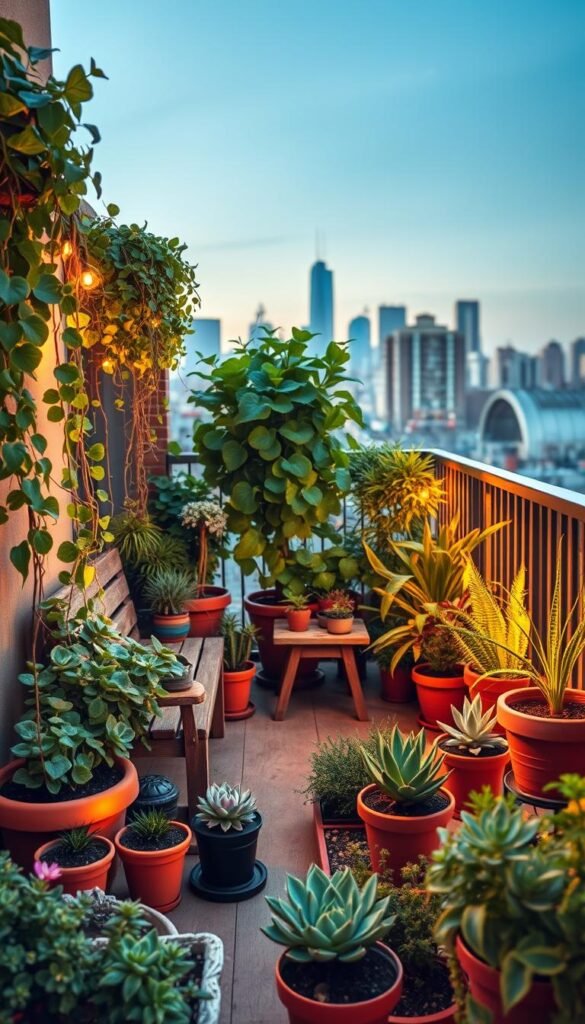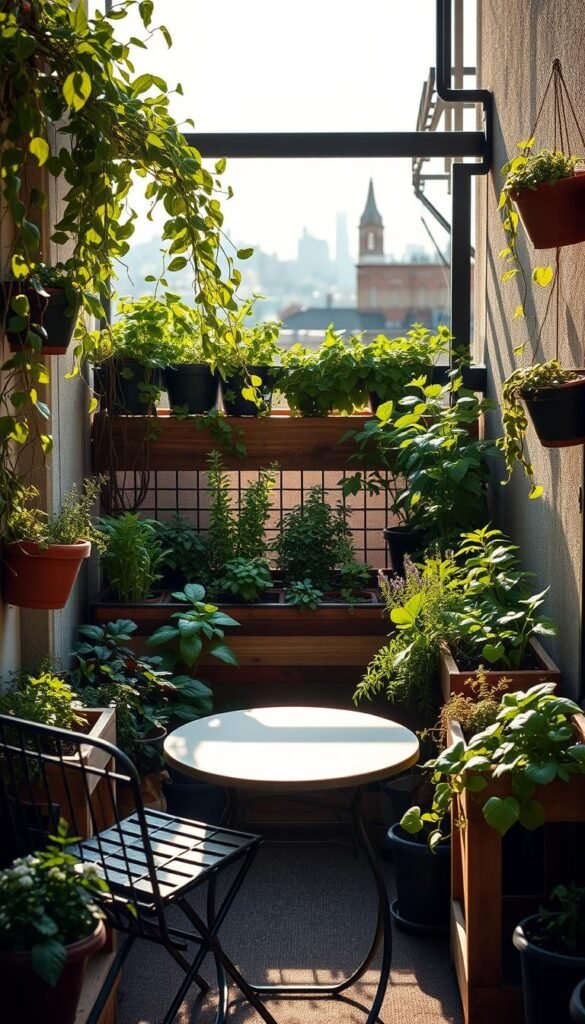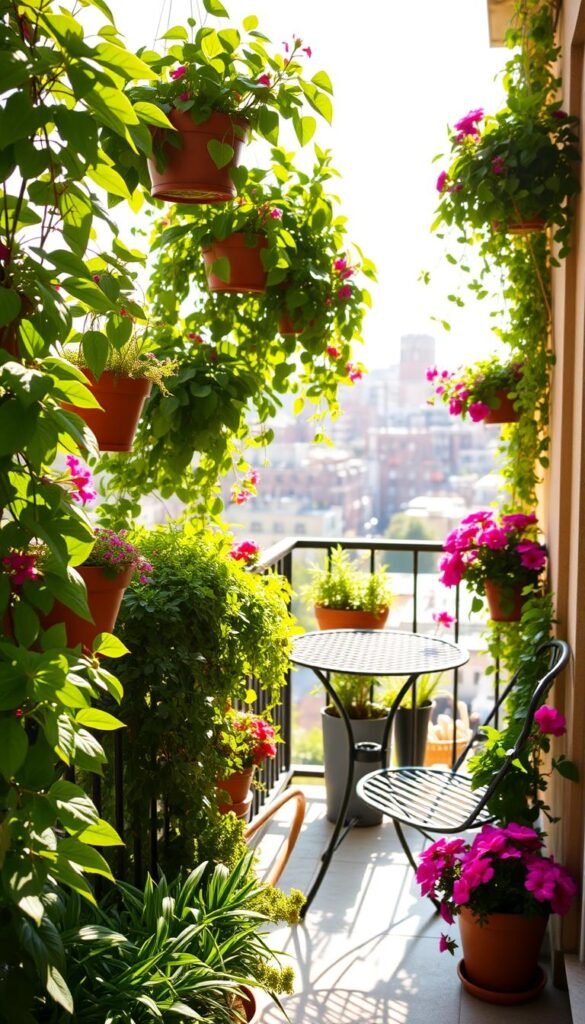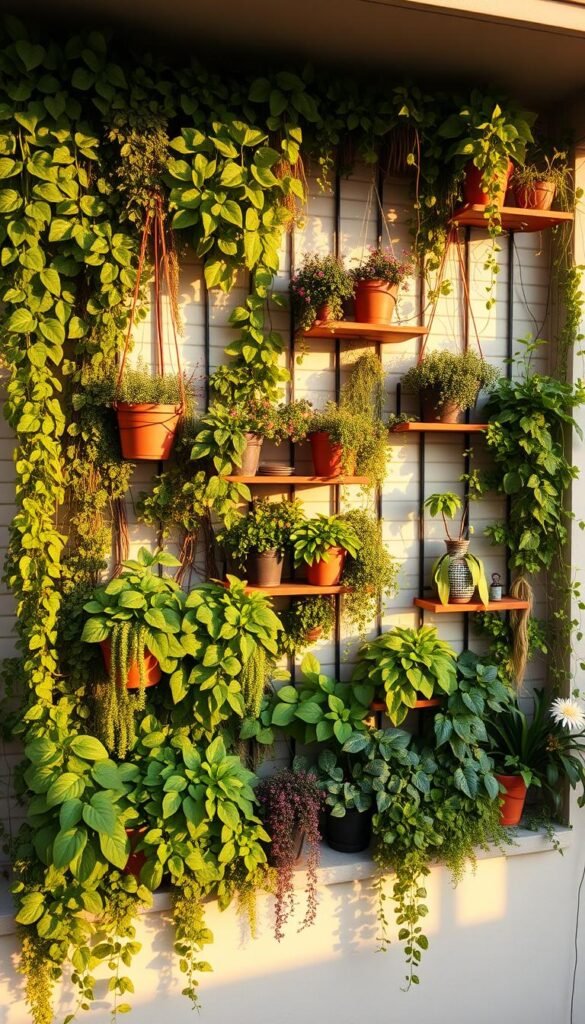Transforming your compact outdoor area into a vibrant green retreat might seem challenging, but it’s easier than you think. Even the tiniest nook can become a thriving oasis with thoughtful planning and creative solutions. Whether you’re dreaming of fresh herbs for cooking or a colorful floral display, urban gardening offers endless ways to reconnect with nature right outside your door.
City living often means limited square footage, but that doesn’t have to limit your green thumb. Repurposing unexpected items like vintage crates or hanging planters adds personality while maximizing every inch. For those just starting out, mastering balcony gardening basics ensures your plants thrive—from selecting the right soil to understanding sunlight patterns.
Why has this trend exploded in popularity? Beyond the joy of nurturing life, greenery reduces stress and improves air quality. Imagine sipping coffee surrounded by fragrant jasmine or harvesting basil for tonight’s dinner—all without leaving home. With smart design choices, your elevated escape can serve as both a peaceful refuge and a functional growing space.
Ready to unlock your outdoor area’s potential? We’ll guide you through space-saving layouts, container hacks, and plant picks that flourish in urban environments. Let’s create a slice of paradise that reflects your style and fits your lifestyle perfectly.
Embracing the Charm of a Small Urban Balcony Garden

Your compact outdoor haven holds more potential than you might realize. Beyond adding beauty, balcony gardens act as personal wellness hubs and eco-friendly sanctuaries. Studies show spending just 20 minutes daily among plants lowers cortisol levels, making your green corner ideal for post-work decompression.
These leafy retreats do more than soothe your mind. They filter airborne toxins like benzene and formaldehyde while creating microhabitats for pollinators. A single planter of lavender or marigolds attracts bees, turning your private nook into a biodiversity hotspot. For fresh approaches to maximizing limited areas, explore these urban gardening ideas that blend form and function.
| Benefit Type | Key Advantage | Impact |
|---|---|---|
| Personal Wellness | Stress reduction | Up to 37% anxiety decrease |
| Environmental | Air purification | 25% cleaner oxygen output |
| Energy Efficiency | Natural cooling | 3-5°F temperature drop |
Strategic plant placement transforms sun-baked surfaces into shaded lounges. Vining plants like ivy deflect heat, while moisture from herbs like mint creates natural air conditioning through evaporation. This microclimate effect could trim summer energy bills by 15%.
City residents report renewed purpose through nurturing their green escapes. One New Yorker grows 14 herb varieties in repurposed shoe organizers, proving creativity thrives in tight spaces. Your morning coffee spot might soon double as a tomato nursery!
Planning Your Space for a Successful Garden

Your outdoor area’s success starts with smart spatial analysis. Before choosing plants, become a detective of light patterns and structural limits. Observe how shadows dance across surfaces at different times—this reveals prime spots for sun worshippers or shade seekers.
Assessing Sunlight and Microclimates
South-facing spaces soak in 6+ hours of direct sun—perfect for tomatoes or rosemary. North-facing areas? They’re goldmines for ferns and snake plants. Use free apps like Sun Seeker to track light exposure through seasons. “Microclimates can make or break container plants,” notes urban gardener Lila Torres. “Reflective windows might roast delicate leaves—position taller plants as natural sunshades.”
| Orientation | Light Conditions | Plant Examples |
|---|---|---|
| South/West | Full sun (6-8 hours) | Basil, Geraniums, Peppers |
| North/East | Partial shade (2-4 hours) | Mint, Begonias, Ferns |
| Covered Areas | Deep shade | Peace Lily, Pothos, ZZ Plant |
Understanding Weight and Building Guidelines
Concrete planters look chic but add pounds fast. Opt for fiberglass or recycled plastic containers—they’re lighter and retain moisture better. Check your building’s handbook: many restrict railings from holding over 20 lbs. A 10-gallon pot with wet soil can weigh 80+ lbs! Distribute weight evenly near support walls.
- Test wind patterns with hanging ribbons
- Use moisture meters to prevent overwatering
- Contact management about hanging restrictions
For those in apartments, urban gardening strategies often require creative compromises. Stackable planters and vertical systems maximize greenery without exceeding load limits. Remember—safety first, tomatoes second!
Balcony Garden Ideas to Liven Up Small Urban Spaces

Maximize every inch of your sky-high retreat through vertical ingenuity. Walls become living art galleries when draped with cascading plants like string-of-pearls or creeping fig. Railings transform into herb libraries using magnetic planters, while overhead spaces burst with hanging strawberries or air plants.
Create instant drama with tiered arrangements. A tall trellis of jasmine anchors one corner, while mid-height basil bushes and low-growing thyme form edible layers. “Varying heights trick the eye into perceiving depth,” says landscape designer Mara Hoffman. “It’s like nature’s optical illusion.”
| Theme | Key Features | Color Palette |
|---|---|---|
| Modern Minimalist | Geometric planters, monochromatic greens | Slate gray + white |
| Cottage Charm | Mismatched pots, climbing roses | Pastel pinks + lavenders |
| Tropical Escape | Broad-leaf plants, bamboo accents | Emerald green + sunset orange |
Repurpose old items for budget-friendly flair. Paint chipped ladders as vertical stands or convert rain boots into quirky flower pots. Seasonal swaps keep things fresh—pumpkins become autumn planters in October, while fairy lights add winter sparkle.
Rotate crops like a pro. Spring bursts with pansies and snapdragons, summer sizzles with cherry tomatoes, and fall glows with ornamental kale. Your elevated oasis stays vibrant year-round without overcrowding.
Utilizing Vertical Space and Creative Hanging Solutions

Elevate your green oasis by looking upward—walls and ceilings hold untapped potential. Blank surfaces become prime real estate when transformed into living displays. With smart techniques, you’ll add depth and functionality without sacrificing room to relax.
Vertical Gardens and Wall Planters
Mount modular planters on vertical walls to grow herbs or succulents in tight quarters. Trellises double as art pieces when paired with climbing plants like clematis or passionflower. For renters, adhesive hooks hold lightweight fiberglass boxes securely—no drilling required.
| Vertical Element | Best Use | Top Plant Picks |
|---|---|---|
| Pocket Planters | Herbs & trailing varieties | Thyme, Pothos, String of Pearls |
| Ladder Shelves | Seasonal flowers | Petunias, Fuchsias, Begonias |
| Wire Grids | Climbing vegetables | Peas, Pole Beans, Mini Cucumbers |
Incorporating Hanging Baskets for Depth
Suspend hanging baskets at staggered heights to mimic nature’s layers. Mix textures—pair feathery ferns with spiky spider plants. Landscape designer Elena Martinez suggests:
“Vary basket sizes for rhythm. Let ivy spill from upper tiers while compact herbs fill lower ones.”
Use swivel hooks to rotate plants for even sun exposure. Self-watering systems prevent drips on neighbors below. For windy spots, secure baskets with carabiners and marine-grade ropes.
Maintain your aerial garden with weekly checkups. Trim aggressive growers to prevent overcrowding. Swap seasonal blooms twice yearly—try pansies in spring and ornamental peppers in fall. Your vertical space stays vibrant with minimal effort.
Choosing Versatile Containers and Planters

The right vessels can make or break your elevated green space. Lightweight options keep structures safe while offering flexibility to refresh layouts seasonally. Let’s explore how to match materials with your greenery’s needs and your space’s personality.
Smart Material Choices for Urban Growing
Plastic and fiberglass planters lead the pack for city dwellers. They’re 60% lighter than clay pots and withstand temperature swings better. For herbs or annual flowers, fabric grow bags offer root-friendly air pruning and fold flat when empty.
| Material | Weight | Best For | Durability |
|---|---|---|---|
| Plastic | 2-5 lbs | Mixed plantings | 5+ years |
| Fiberglass | 3-7 lbs | Tree-form shrubs | 10+ years |
| Terracotta | 8-15 lbs | Succulents | 3-5 years |
| Fabric | 1-3 lbs | Vegetables | 2-3 seasons |
Drainage matters most. Drill extra holes in solid-bottom containers if needed. Elevate pots on feet to prevent water stains—a key tip from patio container gardening experts.
Get creative with upcycled items:
- Colander herb planters with built-in drainage
- Painted milk jugs for trailing flowers
- Wooden crates lined with landscape fabric
Rotate plants between small and large pots as they grow. Shallow bowls work for lettuce, while deep tubs support tomato roots. Your container choices should evolve with your green thumb skills!
Selecting Plants That Thrive in Compact Spaces
Your plant choices make all the difference in a cozy urban setup. Whether basking in sunlight or tucked in shade, container gardening adapts to your unique conditions. Let’s explore varieties that deliver beauty, flavor, and resilience without demanding much room.
Herbs, Succulents, and Flowering Varieties
Sun-loving herbs like basil and mint thrive with just 4-6 hours of light. Prefer shadier spots? Parsley and cilantro flourish with less direct exposure. These aromatic options double as kitchen essentials and natural air fresheners.
For low-maintenance greenery, succulents steal the show. Aloe and jade plants store water in their leaves, surviving busy weeks between watering. Pair them with trailing sedum for texture contrast.
Brighten your space with flowers suited to containers. Marigolds and petunias soak up sunshine, while begonias add pops of color to shaded corners. Rotate blooms seasonally for year-round visual interest.
Considerations for Vegetables and Edibles
Even edibles thrive in tight quarters with smart choices. Cherry tomatoes and peppers excel in 12-inch pots—just ensure proper drainage and support. For quick harvests, radishes and leafy greens grow lush in shallow trays.
Mix aesthetics with function by pairing vegetables with flowers. Nasturtiums offer edible blooms that deter pests, while dwarf citrus trees provide fragrance and fruit. Explore space-saving vegetable varieties that yield impressive results without overwhelming your setup.






